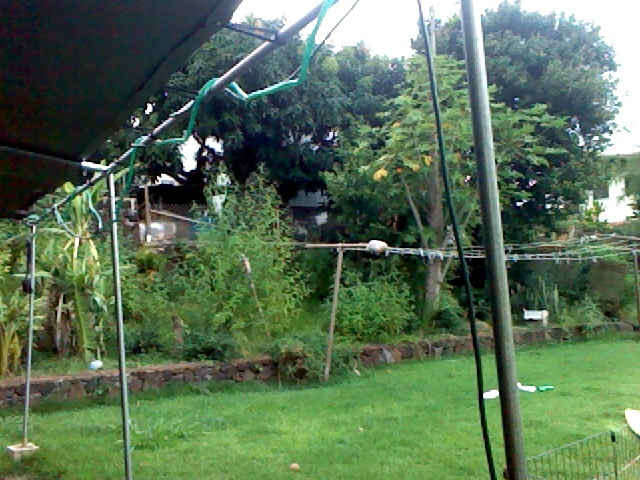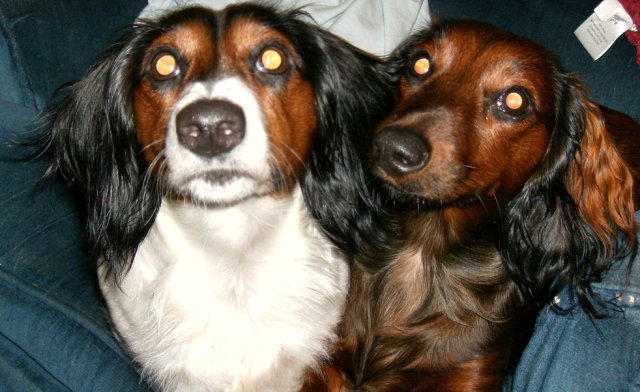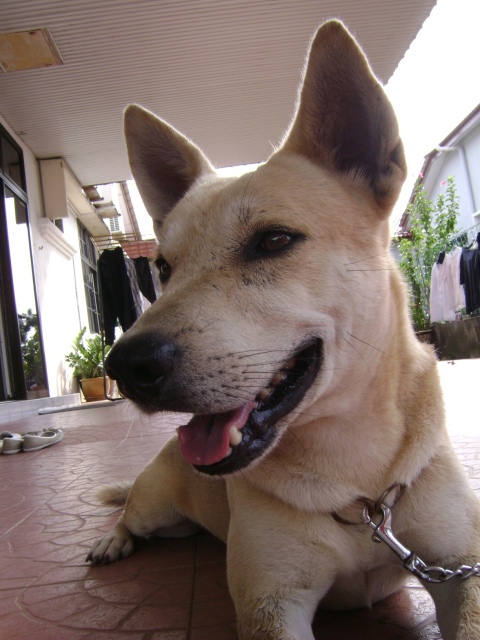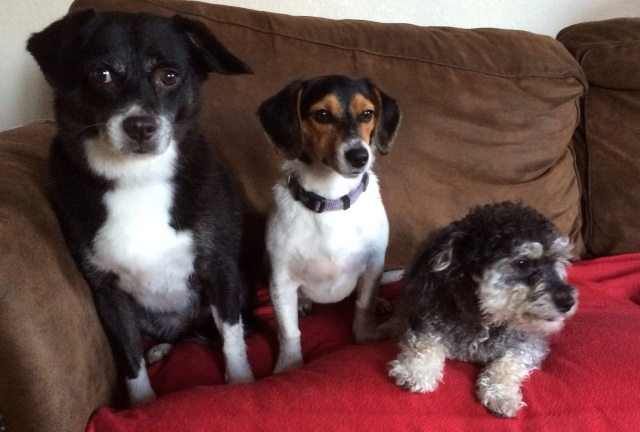Questionhi there,
I absolutely love my 2 month old lab TYLER...he recently has been biting me and everyone in the house resulting in bleeding. Also we are in India and its really hot out here sometimes and he just refuses to go out to poop. He poops everywhere in the house and peeing every 20 mins.
I have never ever raised my hands on him but I do raise my voice to train him but its all in vain. PLeaseeeee help.
AnswerHello Shivani
For the potty training crate training as it is by far the best method.
Providing your puppy or dog with an indoor kennel crate can satisfy many dogs' need for a den-like enclosure. Besides being an effective housebreaking tool (because it takes advantage of the dog's natural reluctance to soil its sleeping place), it can also help to reduce separation anxiety, to prevent destructive behavior (such as chewing furniture), to keep a puppy away from potentially dangerous household items (i.e., poisons, electrical wires, etc.), and to serve as a mobile indoor dog house which can be moved from room to room whenever necessary.
A kennel crate also serves as a travel cabin for you dog when travelling by car or plane. Additionally, most hotels which accept dogs on their premises require them to be crated while in the room to prevent damage to hotel furniture and rugs.
Most dogs which have been introduced to the kennel crate while still young grow up to prefer their crate to rest in or "hang-out" in. Therefore a crate (or any other area of confinement) should NEVER be used for the purpose of punishment.
We recommend that you provide a kennel crate throughout your dog's lifetime. Some crates allow for the removal of the door once it is no longer necessary for the purpose of training. The crate can be placed under a table, or a table top can be put on top of it to make it both unobtrusive and useful.
Preparing the Crate
Vari-Kennel type: Take the crate apart, removing the screws, the top and the door. Allow your pup to go in and out of the bottom half of the crate before attaching the top half. This stage can require anywhere from several hours to a few days. This step can be omitted in the case of a young puppy who accepts crating right away.
Wire Mesh type:Tie the crate door back so that it stays open without moving or shutting closed. If the crate comes with a floor pan, place a piece of cardboard or a towel between the floor (or crate bottom) and the floor pan in order to keep it from rattling.
Furnishing Your Puppy's Crate
Toys and Treats: Place your puppy's favorite toys and dog treats at the far end opposite the door opening. These toys may include the "Tuffy", "Billy", "Kong", "Nylabone" or a ball. Toys and bails should always be inedible and large enough to prevent their being swallowed. Any fragmented toys should be removed to prevent choking and internal obstruction. You may also place a sterilized marrow bone filled with cheese or dog treats in the crate.
Water: A small hamster-type water dispenser with ice water should be attached to the crate if your puppy is to be confined for more than two hours in the crate.
Bedding: Place a towel or blanket inside the crate to create a soft, comfortable bed for the puppy. If the puppy chews the towel, remove it to prevent the pup from swallowing or choking on the pieces. Although most puppies prefer lying on soft bedding, some may prefer to rest on a hard, flat surface, and may push the towel to one end of the crate to avoid it. If the puppy urinates on the towel, remove bedding until the pup no longer eliminates in the crate.
Location of Crate
Whenever possible, place the crate near or next to you when you are home. This will encourage the pup to go inside it without his feeling lonely or isolated when you go out. A central room in the apartment (i.e.: living room or kitchen) or a large hallway near the entrance is a good place to crate your puppy.
Introducing the Crate to Your Puppy
In order that your puppy associate his/her kennel crate with comfort, security and enjoyment, please follow these guidelines:
Occasionally throughout the day, drop small pieces of kibble or dog biscuits in the crate. While investigating his new crate, the pup will discover edible treasures, thereby reinforcing his positive associations with the crate. You may also feed him in the crate to create the same effect. If the dog hesitates, it often works to feed him in front of the crate, then right inside the doorway and then, finally, in the back of the crate.
In the beginning, praise and pet your pup when he enters. Do not try to push, pull or force the puppy into the crate. At this early stage of introduction only inducive methods are suggested. Overnight exception: You may need to place your pup in his crate and shut the door upon retiring. (In most cases, the crate should be placed next to your bed overnight. If this is not possible, the crate can be placed in the kitchen, bathroom or living room.)
You may also play this enjoyable and educational game with your pup or dog: without alerting your puppy, drop a small dog biscuit into the crate. Then call your puppy and say to him, "Where's the biscuit? It's in your room." Using only a friendly, encouraging voice, direct your pup toward his crate. When the puppy discovers the treat, give enthusiastic praise. The biscuit will automatically serve as a primary reward. Your pup should be free to leave its crate at all times during this game. Later on, your puppy's toy or ball can be substituted for the treat.
It is advisable first to crate your pup for short periods of time while you are home with him. In fact, crate training is best accomplished while you are in the room with your dog. Getting him used to your absence from the room in which he is crated is a good first step. This prevents an association being made with the crate and your leaving him/her alone.
A Note About Crating Puppies
Puppies under 4 months of age have little bladder or sphincter control. Puppies under 3 months have even less. Very young puppies under 9 weeks should not be crated, as they need to eliminate very frequently (usually 8-12 times or more daily).
Important Reminders
Collars: Always remove your puppy or dog's collar before confining in the crate. Even flat buckle collars can occasionally get struck on the bars or wire mesh of a crate. If you must leave a collar on the pup when you crate him (e.g.: for his identification tag), use a safety "break away" collar.
Warm Weather: Do not crate a puppy or dog when temperatures reach an uncomfortable level. This is especially true for the short-muzzled (Pugs, Pekes, Bulldogs, etc.) and the Arctic or thick- coated breeds (Malamutes, Huskies, Akitas, Newfoundlands, etc.). Cold water should always be available to puppies, especially during warm weather. [Never leave an unsupervised dog on a terrace, roof or inside a car during warm weather. Also, keep outdoor exercise periods brief until the hot weather subsides.]
Be certain that your puppy has fully eliminated shortly before being crated. Be sure that the crate you are using is not too large to discourage your pup from eliminating in it. Rarely does a pup or dog eliminate in the crate if it is properly sized and the dog is an appropriate age to be crated a given amount of time. If your pup/dog continues to eliminate in the crate, the following may be the causes:
The pup is too young to have much control.
The pup has a poor or rich diet, or very large meals.
The pup did not eliminate prior to being confined.
The pup has worms.
The pup has gaseous or loose stools.
The pup drank large amounts of water prior to being crated.
The pup has been forced to eliminate in small confined areas prior to crate training.
The pup/dog is suffering from a health condition or illness (i.e., bladder infection, prostate problem, etc.)
The puppy or dog is experiencing severe separation anxiety when left alone.
Note: Puppies purchased in pet stores, or puppies which were kept solely in small cages or other similar enclosures at a young age (between approximately 7 and 16 weeks of age), may be considerably harder to housebreak using the crate training method due to their having been forced to eliminate in their sleeping area during this formative stage of development. This is the time when most puppies are learning to eliminate outside their sleeping area. Confining them with their waste products retards the housebreaking process, and this problem can continue throughout a dog's adult life.
Crating Duration Guidelines
9-10 Weeks
Approx. 30-60 minutes
11-14 Weeks
Approx. 1-3 hours
15-16 Weeks
Approx. 3-4 hours
17 + Weeks
Approx. 4+ (6 hours maximum)
*NOTE: Except for overnight, neither puppies nor dogs should be crated for more than 5 hours at a time. (6 hours maximum!)
you must never leave him/her crated for more than the Crating Duration Guidelines suggest.
s/he has not eliminated shortly before being placed inside the crate.
(See Housetraining Guidelines for exceptions.)
s/he has not had sufficient exercise, companionship and socialization.
As for the biting, puppies use their mouths, to teach him to be more gentle, say EhEh, then continue the play, correcting him each time he bites too hard.
Do not shout, as when humans raise their voices they go up an octive in tone from their normal tone and to a dog, using a higher tone means praise or play. Instead grit your teeth and speak through them, that way you lower your tone and to a dog this lowering of tone means a warning or correction.
Labs are an extremely active breed, so get in as many walks and activities as possible. Swimming is a great exercise for both dogs and humans and as you mention heat is an issue, cooling off in water is most benificial.

 Designating bathroom area
Question
backyard
I have 2 medium mutts that are both b
Designating bathroom area
Question
backyard
I have 2 medium mutts that are both b
 Dogs Figthing
Question
Stella and Scarlett
I have 2 minature dachshun
Dogs Figthing
Question
Stella and Scarlett
I have 2 minature dachshun
 My mini-daschund is breaking ME in
Question
Tyson!
My miniature daschund is 8 months now,
My mini-daschund is breaking ME in
Question
Tyson!
My miniature daschund is 8 months now,
 how to train a dog?
Questiondog
QUESTION: hi,I want to ask you,how t
how to train a dog?
Questiondog
QUESTION: hi,I want to ask you,how t
 Dog aggression
Question
The 3 of them
I have 3 spayed female do
Dog aggression
Question
The 3 of them
I have 3 spayed female do